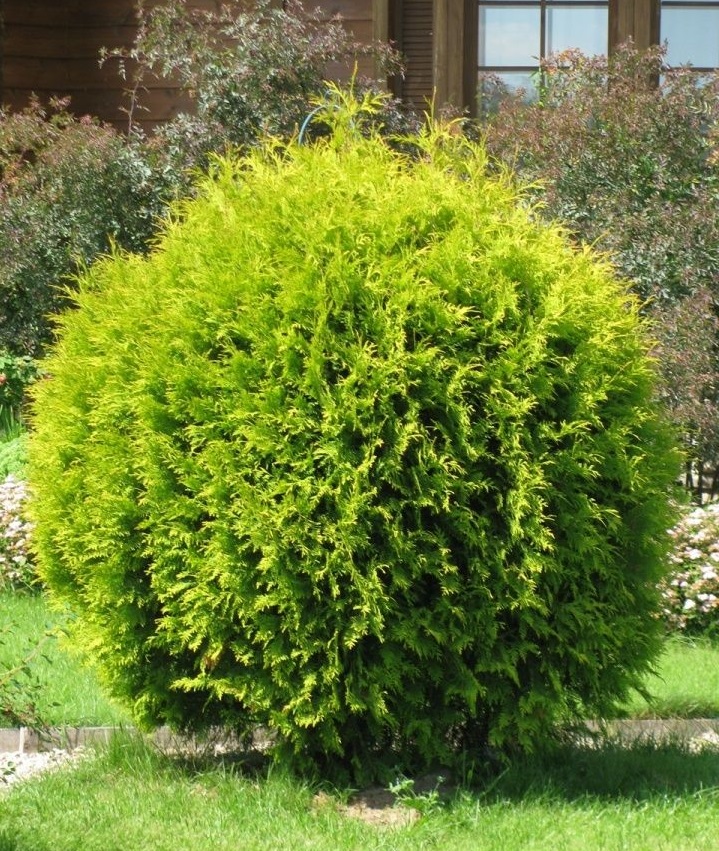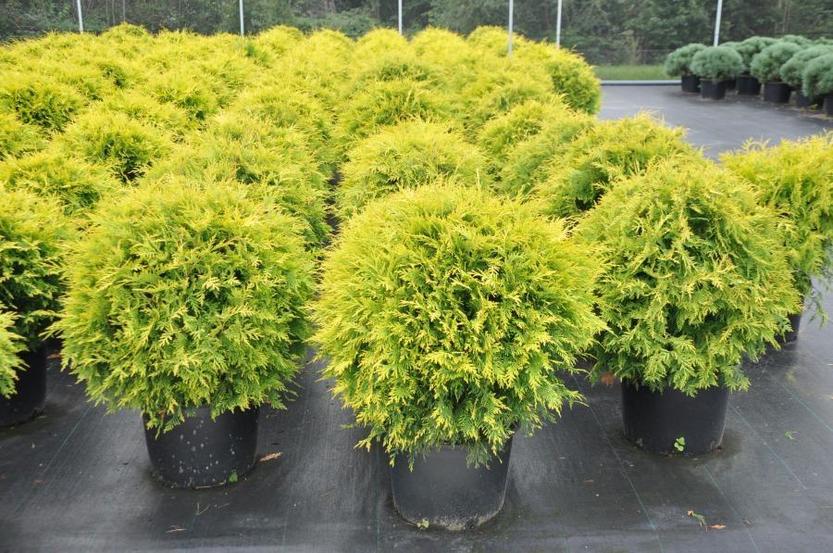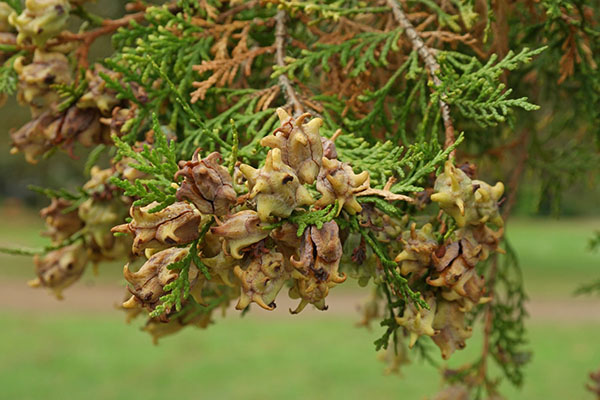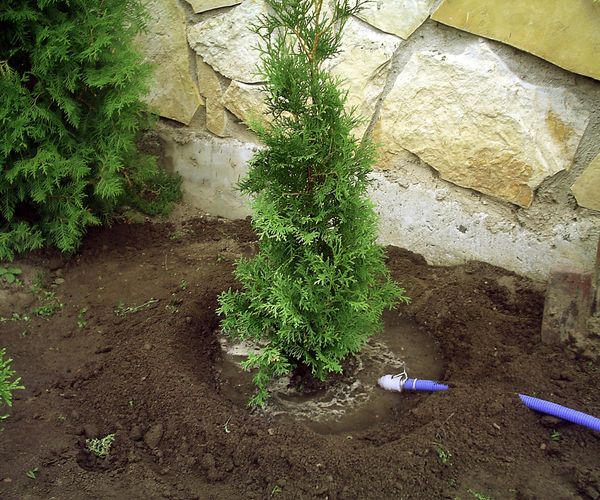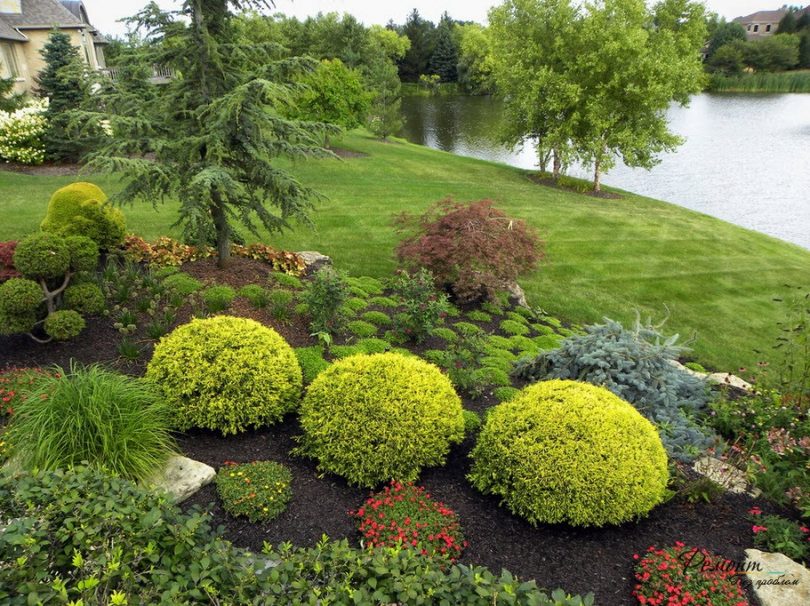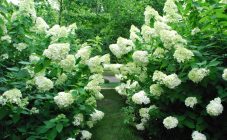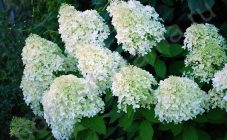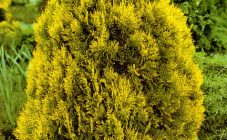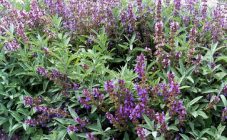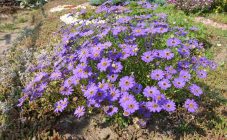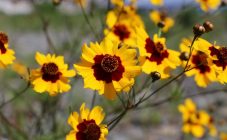Content:
Evergreen shrubs are very popular with domestic summer residents, since they are unpretentious in care and look spectacular all year round. Tuyu can be found not only in summer cottages, but also in parks, gardens, squares. One of the most famous varieties of this plant, suitable for growing in most Russian regions, is thuja Golden Globe. The main characteristic of this type of ornamental shrub is its unpretentiousness.
A quick reference about culture
Golden Globe (translated into Russian "golden ball") is a decorative variety of thuja, which is a small bush with a spherical crown (hence the name). The crown can be of different sizes, depending on the age of the tree. This shrub grows and develops for a very long time, but is highly resistant to cold weather, wind and sudden changes in temperature.
The official name of the variety, which is used in the reference book, sounds like "thuja western Golden globe". Now there are many new varieties of this evergreen shrub, but the Golden Globe is still the most popular. The spherical crown of this plant is visible from afar and immediately attracts attention.
Description of the variety
Thuya Golden used to be a rarity, but now the situation has changed. This variety of thuja appeared in Russia relatively recently, in the last third of the 20th century and was bred specifically for use in landscape design: for planting in parks, squares, schools and kindergartens as an ornamental plant. In the description of the variety, it is indicated that the main distinguishing feature of this variety of thuja is the crown in the form of a sphere. You can recognize this variety of thuja by the following features:
- Spherical crown;
- The height and diameter of the crown reaches 1 m;
- Reddish-chestnut color of the bark, in old trees the bark leaves the trunk in small pieces;
- The needles have a bright light green color, gradually darkens with age.
Landing
Thuja can be planted with seedlings and seeds. Seedlings are planted in open ground in spring, in a previously prepared hole with a nutrient mixture. A drainage layer is placed at the bottom. The seedling is carefully placed in the center of the hole, completely covering the roots with earth. After planting, you can water and loosen the soil.
If the summer resident decided to arrange a hedge on the site, it is more rational to plant the thuja with the help of seeds. This can be done as follows:
- In autumn, collect thuja cones;
- Leave them warm for several days to fully open, pour out the seeds;
- Sow in a box filled with conifer nutrient mixture;
- Place the box in a shady area.
If done correctly, the first shoots will appear in the spring. Thuja western Golden Globe quickly adapts to the environment and almost always takes root successfully.
Care
You can read about the agrotechnics of growing thuja in any reference book for novice gardeners and landscape designers. Thuja Golden globe is undemanding to care, but nevertheless it is not worth leaving this plant "to the mercy of fate". The list of basic care measures includes the following procedures:
- Watering;
- Top dressing;
- Mulching;
- Crown formation by pruning.
Thuja prefers moderate watering. It will easily survive a short drought, but the roots of the plant will instantly begin to rot from excess moisture. The ground around the thuja should be slightly moist all the time.
This variety thrives on infertile soils. For intensive growth and development, no special application of complex fertilizers of industrial production is required, and this is one of the main advantages of the variety. However, the plant can acutely feel a deficiency of calcium and potassium (in this case, the needles of the thuja crumble and deform). Old, time-tested organic dressings - ground eggshells and ash sifted through a sieve, will help to solve the problem. They can be brought in for both therapeutic and prophylactic purposes.
Young plants need mulching. For mulching, you can use peat, straw or coniferous spruce branches.
Diseases and pests
Caring for coniferous evergreen shrubs involves regular control of diseases and pests, as well as their prevention. Thuja, especially with improper care or in an unfavorable climate, often attracts dangerous pests - parasites.
The greatest danger to this shrub is represented by:
- Aphid;
- Bark beetle;
- Spider mite;
- May beetle, aka Khrushch.
To get rid of uninvited guests, the bark of the tree must be sprayed with any industrial insecticide containing the active active ingredient imidacloprid. Spraying is carried out twice, the second time - two months after the first procedure.
Thuja Golden Globe is a variety that has a strong immunity to bacteria and viruses. However, with high soil moisture, the plant can get sick with a fungus. In this case, it is necessary to treat the root collar with solutions of industrial fungicides. Copper sulfate fights well against fungus.
Thuya Golden Globe in landscape design
This "golden ball" is often planted in parks and gardens. There are both group and single landings. When planting a plant for decorative purposes, it should be borne in mind that she loves space and does not like crowding. This variety looks good in combination with other varieties that have dark green needles. In this case, you need to plant the bushes, alternating the light green Golden Globes with dark green species.
Paired thuja bushes are often planted on both sides of the porch of a private house, gate or front entrance to a building. In suburban areas, this variety is often used to create hedges in combination with other types of evergreen shrubs. You can plant the thuja in a solid wall, or leave space between shrubs to fill it with deciduous trees. Such a hedge looks very beautiful in autumn, when deciduous trees acquire a bright red or yellow color, and the thuja retains its natural light green color.
Golden Globe is one of the most famous and beautiful thuja varieties. Due to its unpretentiousness, it will grow and develop well in almost any region of Russia.
